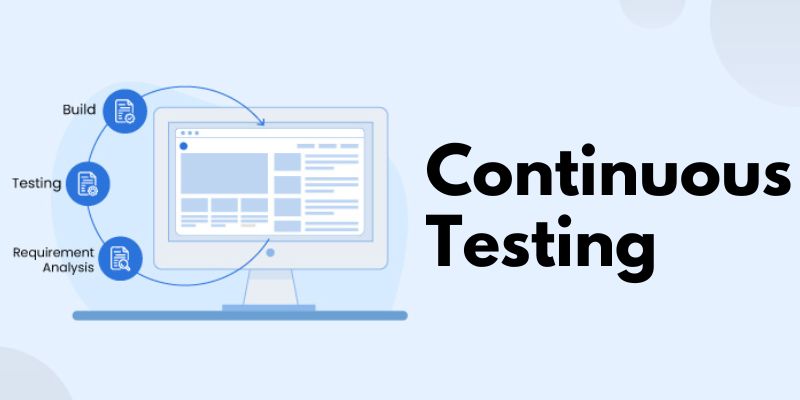Continuous testing ensures that the software is always as bug-free as possible. It tests the program several times, with the test cases never being the same, the testing documentation being very detailed, and many of the repetitive testing operations being automated. Through this blog article, we go on a fascinating journey to discover Continuous Testing in Software Development, how it works and its benefits. Are you looking to advance your career in Software testing? Get started today with the Software Testing Course in Chennai from FITA Academy!
What is Continuous Testing?
Continuous testing entails running end-to-end tests to evaluate the end-user experience across the front-end and back-end operations. One of the key goals of CT is to guarantee that the tests are comprehensive enough to detect when an application modification has an undesirable effect on the software’s functionality.
It is about lowering the frequency of false positives by prioritizing the most flexible and robust test frameworks over faulty scripts. It is all about code inspection and optimization in the test suite to eliminate redundancies.
The DevOps and agile methodologies ensure that all technology, processes, and people must be transformed while the testing component remains unchanged. Continuous Testing ensures that the testing module is also changed.
Even in today’s age where software is devouring the world, there are firms that have implemented the DevOps paradigm to a large extent, yet automated testing is still at an all-time low. Continuous Testing aims to transform all of that for the better.
How does Continuous Testing make working so easy?
End-to-end testing that is more in line with agile and DevOps approach is possible with the correct set of integration between automation, collaboration, and toolset.
The continuous testing process is divided into sections such as development, continuous integration, quality analysis, and application performance. These four domains must be tested in their own distinct ways in order to achieve thorough end-to-end testing.
The testing process begins with the construction of the code, which is accomplished through the use of tools such as Selenium and other variations for testing the functionality of the code. Learn all the Software applications and Become a software tester Expert. Enroll in our Software Testing Online Course.
Benefits of Continuous Testing
- To maximize test execution, align testing with business risk.
- Reducing the quantity of manual testing and increasing the importance of automated testing
- Providing insight for the product release by automating quality checks
- If possible, shift the focus of testing to the API layer.
- Service virtualization and test data management deployment
- Integrating functional testing into the CI/CD process to include it in the delivery pipeline
Why Continuous Testing?
In a world increasingly driven by software, test automation levels remain terrible. As a result, there is an urgent demand for automated testing that meets the needs of the sector.
However, due to the rising complexity of the software, as well as its distributed and open source nature, test automation cases are becoming increasingly difficult. Today, everything revolves around the cloud, with the Application Program Interface and the age of microservices.
Because to agile and DevOps principles, it is now possible to have software that can be published once every two days to hundreds of times each day. All of this places enormous strain on test design and maintenance, as testing time is reduced dramatically. The significance of software cannot be overstated.
Without a question, it runs the majority of industrial verticals. Failure on the part of the software equates to failure on the part of the business. As a result, the impact of application-related failures can also affect non-technical business workers.
Testing is one of the most critical aspects of the downstream software delivery process that must be prioritized. It is all about reducing the business risk associated with the testing process that makes continuous testing so important. If software testing is unable to verify that business risks are managed. It becomes an issue since the entire process of continuous integration and continuous delivery becomes difficult to complete. Looking for a career in Software Tester? Enroll in this professional Software Training Institute In Chennai and learn from experts about Software Lifecycle Models, Test Strategy and Test Planning.
